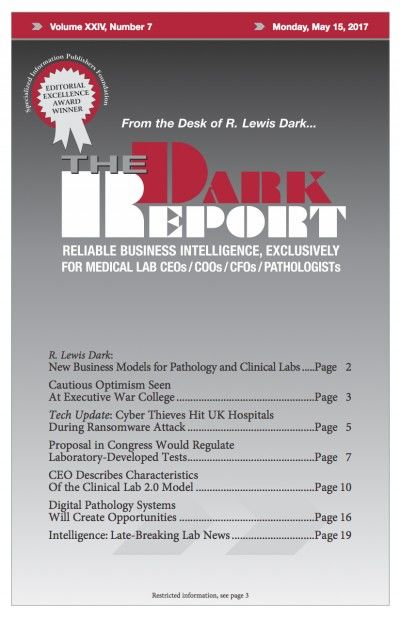CEO SUMMARY: Advanced Pathology Associates, a 15-member private pathology group practice, had the distinction of generating data for the clinical study that Philips submitted to the Food and Drug Administration for review of its whole slide imaging system. Following the FDA’s decision to clear this system for sale earlier this month, and informed by their …
Digital Pathology Systems Will Create Opportunities Read More »
To access this post, you must purchase The Dark Report.


